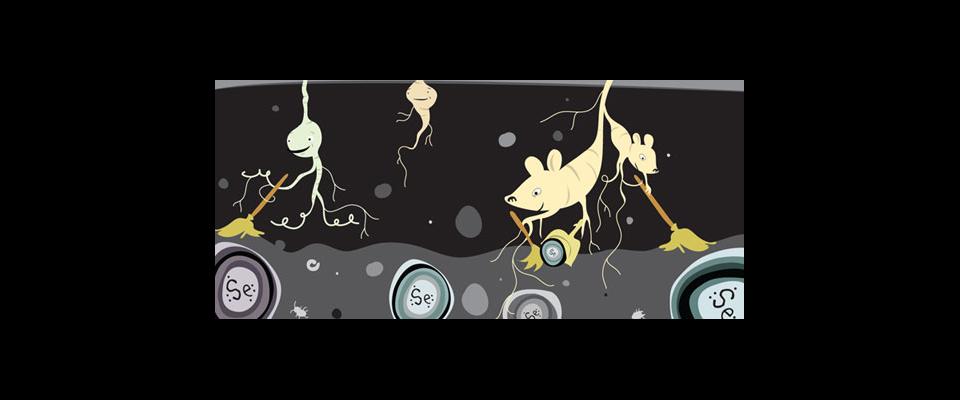Genetically modified mustard plants mop up toxins
Genetically modified organisms have earned few fans among the Prius-driving, organic food–buying set, who say that messing with genomes will be disastrous for ecosystems and human health. But a recent study by Berkeley scientist Norman Terry and colleagues might encourage green-minded types to consider the possible benefits of genetic engineering.
“We’re using genetically altered plants to clean up the environment,” explains Terry, who worked with a team of researchers to show that genetically engineered Indian mustard plants remove toxic selenium from the soil at twice the rate of wild plants.
Animals, including humans, need selenium to survive; ingesting too little of the element lays the foundation for health problems ranging from an enlarged heart to developmental delays. In large quantities it becomes poisonous, causing death and deformation among wildlife populations. Selenium contamination is especially a problem on the west side of California’s San Joaquin valley, where farm irrigation has accelerated the leaching of naturally occurring selenium from soils into runoff and groundwater.
For years, Terry’s research group has been studying phytoremediation, or plants’ ability to remove contaminated runoff from agricultural fields and oil refineries. It’s cheap and effective, compared with alternatives. But, to Terry’s knowledge, this is the first time anyone has inserted a gene from a slowgrowing plant that’s good at soaking up toxins—milk vetch—into a fastgrowing plant—Indian mustard.
Quick growth is an advantage for phytoremediation: The faster a plant creates new tissues, the more toxins it can store or detoxify in those tissues.
“Everyone is nervous about putting foreign genes into plants because they may escape into other plants and change the world. It’s a valid concern,” says Terry. But minimizing the risk of gene escape was not the aim of this study. “The first step in the process is to test whether it’s even feasible. If it’s feasible, then you go to the second step”—ensuring that the plants won’t wreak ecological havoc.
For large-scale phytoremediation to take off, farmers need a profit incentive: the development of selenium- loving cash crops. But cultivating transgenic plants requires completing a heap of paperwork and navigating a bureaucratic maze. According to Terry’s colleague Gary Bañuelos of the USDA’s Agricultural Research Station in Parlier, that’s extra work and risk most farmers aren’t willing to undertake. Bañuelos supports planting unmodified broccoli, canola, sunflower, and cactus, because they can accumulate selenium under high-salinity conditions.
“There may be a place for transgenic plants,” says Bañuelos, “but I don’t think it’s on the farm.” Still, he doesn’t discount a turnaround. “Progressive farmers with a knowledge and some understanding of transgenic work may be more inclined, especially if the particular transgenic plant, or plants, were super performers.”
Manufacturers use selenium to add pink and red tints to glass, as well as remove color from glass. In office buildings, tinted glass with added selenium is used to minimize sunlight coming into workspaces, helping maintain a cool interior and protect wallpaper and paint colors from fading.




















